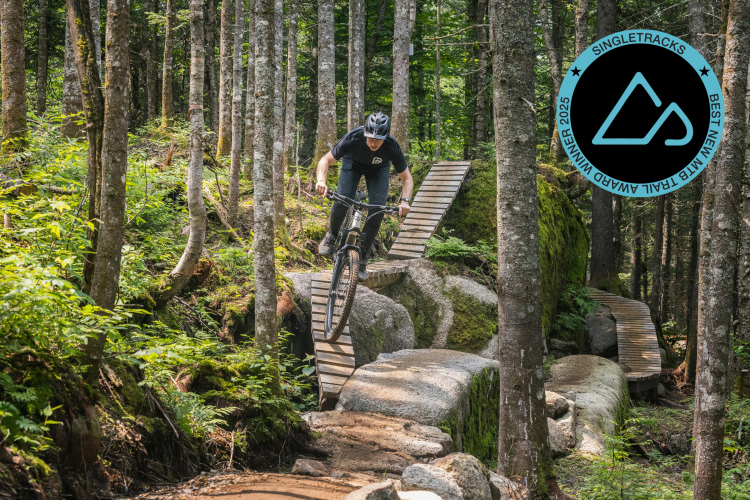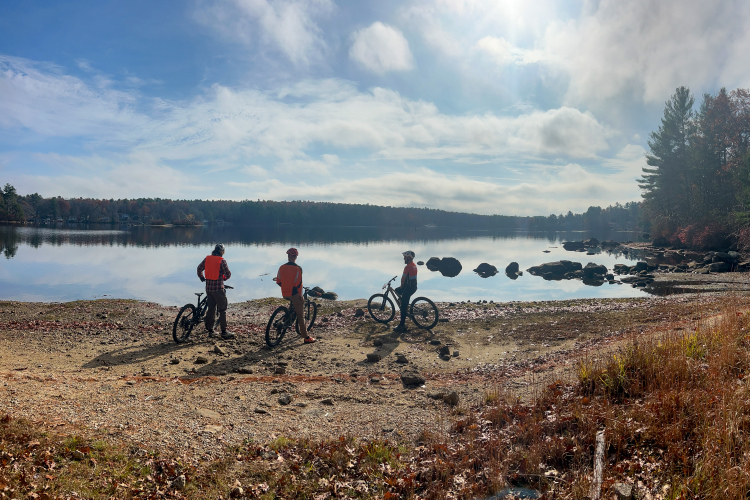It can be tricky to decide which table to sit at in the lunchroom on that first day of school. “Where do I fit, and who will make fun of me the least?” Similarly, getting into the local mountain biking scene can take time, and newer riders are aswim with questions that they may not feel comfortable asking. This article is a response to a question from one such new-shredder and we hope it can make some sense of things for other riders as y’all progress through this sweet sport.
What should I check before a ride?

Leah passed along this little nugget that’s taught to young Little Bellas riders: ABC stands for air, brakes, and chain. A quick check of these three is usually all that’s needed before heading out to ride.
Air
Tires
Tire pressure has a massive effect on the way your bike performs, and it’s worth checking before every ride. If you ride on the weekends the pressure can change dramatically between outings, and if it gets too low you will waste heaps of energy trying to pedal the smooshy rubber and also risk puncturing the tire between the ground and the rim — otherwise known as pinch flatting.
For this reason, it can be worth investing in a good digital gauge so that you know precisely how much air is in there. A lot of folks will tell you to check pressure with your hand, but that can be inaccurate and doesn’t allow you to make micro-adjustments and experiment with the numbers to find your ideal balance. A well designed pump and gauge are well worth the investment, and many of them will typically last the life of a bike. Our recent article on basic tire pressure should help get this crucial bit of bike setup dialed.
If your tires are tubeless (and they likely are for most modern bikes) it’s a good idea to check and top off the sealant once every 4-6 weeks. That frequency is dependent on moisture in your area and how often the sealant is used to fill punctures. If your tires run too low on sealant it won’t be able to plug punctures and you’ll be left putting a tube in the tire. While this isn’t major surgery it can be a particularly painful task during the cold months, making it doubly worth your while to check the sealant level. Here are some tubeless tire tips to get you rolling.
Suspension
The next pneumatic factor to consider is your suspension. If your bike has air-sprung suspension, and most entry-level mountain bikes do, you will want to check the pressure every few rides to make sure it’s staying where you want it. When you push down on the handlebars or saddle with your hands, the bike should spring firmly back.
Even the best shocks and forks will lose pressure over time, resulting in a less supportive and efficient ride character. If you have a pre-ride checklist, put suspension in the fortnightly slot.

Brakes
A quick parking lot stop test can confirm basic brake operation. Like many of the consumable bits on your sweet new bike, it can also be worth an occasional peek at the brake pads to see how much braking compound remains attached to the backing plate. Once they get down to roughly 1.5mm, or about a third of the original thickness, it’s time to consider replacements. If you will be descending in the rain you may want to replace them sooner and keep those thinner pads around as backups. While you can usually get by with pads until the backing squeals against the steel rotors it’s best to change them before that happens for optimal performance and to prevent damage to the disc. This article has tips for changing pads that should be helpful for first timers.

Chain
Next, make sure your chain is adequately lubed. If you ride in the rain, the chain will need to be dried off and lubed after every ride. For desert shredders, you can likely wait until the chain starts to make a little noise before lubing. While perfection is a lovely ideal, it’s better to have an under-lubed chain than a greasy mess. Too much lube will attract dirt that sands down the drivetrain, whereas hitting the trail once without enough lube on the chain won’t change much. The shifting may become sluggish or clunky, and the drivetrain will start to sound like a tiny tank. Drip a little lube on each of the links, wipe off the excess, and you’re good to go. Our article on lube theory will provide a deeper dive for folks who want to know the why and when of this story.

Bolt check
In keeping with the ABC acronym, file this under B for bolts. With the tires and suspension aired up where you like them, and the chain adequately lubed, it’s a good idea to occasionally check the headset, crank bolts, and any other fastener that could cause problems if it comes loose. If you’ve ever driven on dirt roads for long periods of time you have likely heard how a car can slowly dismantle itself with the shaking. Mountain bikes are similar. Checking your headset and other crucial moving parts every few weeks can go a long way. If anything seems loose, or is rattling around, don’t ignore it as the problem likely won’t get better on its own. Put on your detective hat and find that loose part, then tighten it. For more details, check out our article on which bolts to check and this one about how much to torque them down.
What are some of the things you do to check your bike before every trail ride? Please share them with the Singletracks community in the comments below.











10 Comments
Jan 22, 2022
Jan 21, 2022
A quick once-over of the bike can make the difference between a good ride and walking out.
Jan 23, 2022
Jan 21, 2022
I used the ABC list with a Cub Scout group (6-year-olds) and even they seemed to understand and remember it. Love how simple this is.
Jan 21, 2022
Jan 23, 2022
Jan 21, 2022
Jan 23, 2022
I know see so many people who just grab their bike out of the garage/basement and just go. Then later on the trail they are complaining out an issue that could have easily been prevented.
I oftentimes think that the many people out there that have issues with tubeless tires, especially with them burping, are the ones who don't check their air pressure. I have been riding tubeless for 4 or more years, I ride pretty hard, and have yet to have my tire burp and I have only had one flat.........which is way less than when I had tubes. I would flat 1 or 2 times a year at minimum when I ran tubes. Sometimes more.
Sep 6, 2023
Sep 6, 2023